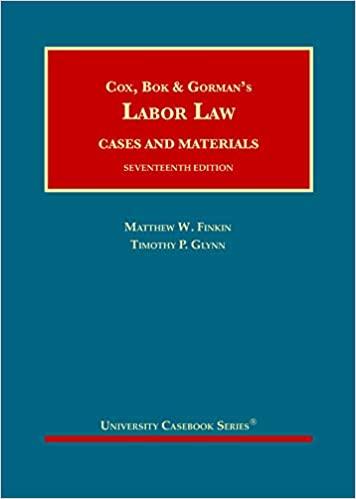Question
Topic: Bioethics and End-of-Life Decisions Consider the following statement from the Supreme Court when analyzing the case of Casey v. Planned Parenthood505 U.S. 833 (1992).
Topic: Bioethics and End-of-Life Decisions
Consider the following statement from the Supreme Court when analyzing the case of Casey v. Planned Parenthood505 U.S. 833 (1992). In Casey, the Court examined the 14th Amendment Due Process protections of one's right to make choices about personal matters such as marriage and procreation and also about one's death. The Court compared the decision of whether to have an abortion with the decision of how and when to die and reasoned that both are intimate and personal choices and are closely connected to autonomy and personal dignity.The doctrine of Double Effect-This doctrine says that if doing something morally good has a morally bad side-effect it's ethically OK to do it providing the bad side-effect wasn't intended. This is true even if you foresaw that the bad effect would probably happen.
Tutor- How would you for Bioethics and End-of-Life Decisions:
- Compare and contrast the ethics of voluntary or assisted suicide and passive euthanasia using the rule/doctrine of the double effect.
- Consider palliative sedation, withdrawal of food and fluids, and other medical means of relieving suffering. Considering bioethics, self-determination, health policy, and the 14th Amendment.
Step by Step Solution
There are 3 Steps involved in it
Step: 1

Get Instant Access to Expert-Tailored Solutions
See step-by-step solutions with expert insights and AI powered tools for academic success
Step: 2

Step: 3

Ace Your Homework with AI
Get the answers you need in no time with our AI-driven, step-by-step assistance
Get Started


